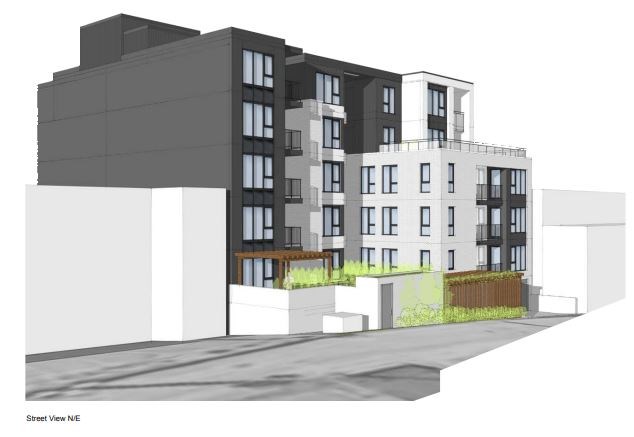The good news: more new rental units could be coming to East Vancouver. And they’re proposed for highly energy-efficient buildings that aim to meet the Passive House standard.
But will they be affordable for your average Vancouverite?
The latest project is proposed for 3435 East Hastings near the PNE. It's within a block of ‘The Heights,’ an 85-unit market rental building constructed to Passive House standards that recently opened at Hastings and Skeena.
Mayor Gregor Robertson marked The Heights' opening in early February with a press conference highlighting the fact it created much-needed rental housing and would help the city reach its greenest city goals.
It was built under the city’s Rental 100 program, which applies to projects where 100 per cent of the residential rental housing units are secured for 60 years or the life of the building, whichever is greater. Incentives are available, including the potential for a development cost levy (DCL) waiver if rents meet or fall below city guidelines — a waiver the The Heights earned. Affordability, according to the Rental 100 program, is achieved primarily through tenure since renting is less expensive than owning.
Rents at The Heights will range from $1,195 to $1,395 for a studio, from $1,575 to $1,950 for a one-bedroom, from $2,170 to $2,450 for a two-bedroom and $3,000 for a three-bedroom.
The city’s definition of “affordable” has been under fire recently by critics questioning exactly how affordable rents are in its rental incentives guidelines. The guidelines were amended earlier this year. In the east area, rent in projects eligible for a DCL waiver must meet or fall below $1,496 for a studio, $1,730 for a one-bedroom, $2,505 for a two-bedroom and $3,365 for a three-bedroom.
The market rental project seeking rezoning at 3435 East Hastings is close to Cassiar Street. It's also proposed under the Rental 100 program and it aims to meet Passive House standards. The developer has the option to apply for a DCL waiver and the city would consider granting it criteria around average unit sizes and rents are met.
An open house about the rezoning proposal takes places April 16 at Hastings Community Centre.
The six-storey project includes 45 secured market rental units, as well as commercial and amenity space. A two-storey commercial building is currently on the site. Existing zoning allows for a four-storey mixed-use building. The Rental 100 policy allows consideration of six-storey buildings.
Submitted by Cornerstone Architecture, the proposal’s public benefits under the rezoning and design rationale point out it “represents revitalization of currently underutilized land, occupied by energy inefficient buildings in poor condition” and that “the development will increase the supply of housing, specifically market rental housing.”
Passive House construction is increasingly popular in Vancouver. Earlier this year, the city told the Courier that 34 Passive House projects, featuring a total of 1,010 dwelling units, have been approved or are in the process of being approved and that there were another 26 projects, which feature 630 dwelling units, in the works, which may or may not proceed to applications.
One such Passive House project, also near the PNE, is proposed for 708 to 796 Renfrew St. It’s in the rezoning stage and is for a five-storey market rental building, which is being pitched under the city’s Affordable Housing Choices Interim Rezoning Policy. It goes to open house April 6 at Hastings Community Centre. If approved, it will replace seven existing single-family lots.
Seven single family homes go and are replaced with over 77 new Passive homes! This along with some street level retail! https://t.co/tDy23dfRbz via @VanCourierNews @PassiveHouseCan @GBLArchitects @greenestcity
— Chris Higgins (@CAHiggins) March 14, 2018
In recent years, the city has been encouraging more energy efficient buildings, as well as pushing for more social and market rental housing.
Council plans to enable 11,000 new market rental housing units to the city’s housing stock, according to the 10-year Housing Vancouver strategy. Meanwhile, by 2020, new homes must be carbon neutral and use 50 per cent less energy than homes did in 2007. Buildings are the largest source of greenhouse gas emissions in Vancouver. They produce more than half of the city’s total emissions in 2030.
@naoibh



